LG 55-Inch E6 4K Ultra HD TV Review: Stunning, Future-Proof OLED
While pricey, the LG E6 is a superior OLED TV with jaw-dropping picture quality, support for the latest HDR formats and strong audio.
Why you can trust Tom's Guide

Although continual improvements are being made to LCD TVs, these sets have yet to dethrone LG's stunning OLED TVs. The 55-inch LG E6 is another demonstration of the technology's prowess. This TV delivers a crystal-clear picture with rich colors and subtle contrasts, albeit at a premium price of $3,500.
The LG E6 is a 4K ultra-HD TV with all the latest technology, including support for several high dynamic range (HDR) formats: HDR10, Ultra HD Premium, and Dolby Vision. It can also handle forthcoming formats, which is an important consideration if you're making a long-term investment.
Design: Pretty skinny
LG calls the E6's design "picture-on-glass." That description references the company's decision to apply the OLED right onto a glass panel, resulting in a thin profile and a translucent glass edge around the display. It makes for a very skinny panel; although, at 2.2 inches thick, it is thicker than the less expensive B6 LG OLED, which is only 1.9 inches thick. The difference is a built-in sound system along the bottom of the screen whose horizontal grille looks like a low-profile soundbar.
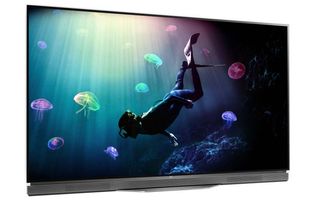
LG managed to incorporate all of the necessary connections into the low-profile E6, including four HDMI ports compatible with current 4K copy protection schemes and three USB ports. There's also built-in Wi-Fi and an Ethernet port.
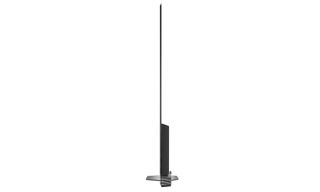
MORE: Our Favorite 4K (Ultra HD) TVs Available Now
Performance: Clean and pure
OLED designs boast two major advantages over LED LCD sets and even the latest quantum-dot LCD models. First, because OLED (organic light-emitting diode) displays can light up individual pixels, they can also turn them off, yielding deep blacks and some staggering contrasts that LCDs can't match.
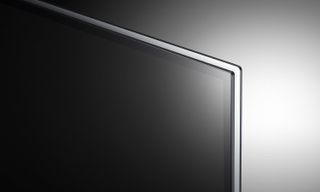
Second, because of their lighting system, OLEDs look good from nearly every angle, meaning that even if you're not sitting dead center (your spouse gets that spot) and you have to sit somewhat to the side (so-called off-axis), you'll still see all the details and bright colors without any washouts.
The differences between the LG E6 and its nearest competitor, the Samsung KS9000, are obvious. Although the Samsung set does an excellent job of handling subtle contrasts and colors (and keeps pace with the LG in these areas), it lacks clarity in scenes with extreme contrasts, such as a flashlight shining in a dark room or fireworks against a night sky.
With 4K HDR content, the LG E6 really excelled. Our color tests using the set's preset Cinema mode showed the set was pretty accurate, even if it did drift toward the darker end of the blue spectrum in both standard HD and HDR modes.
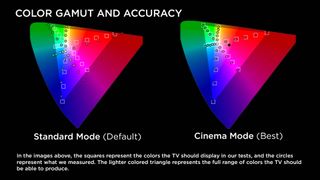
The E6 revealed significant image details — even some I missed when I saw The Martian in a theater. On the LG set, for example, I could clearly see the dark NASA label on Matt Damon's dark sweater. Faces also took on a truly fleshy appearance, and dark corners, such as those in the opening Martian storm scene, revealed details that were obscured on other sets.
In an HDR test music video, the LG E6 revealed not just the faces but also the clothing worn by audience members sitting in the shadows; that's something other sets could not reproduce.

When displaying the 4K version of The Amazing Spider-Man 2, the LG E6 demonstrated that it also could handle a wide range of colors without exhibiting banding or blotchy posterization. It was such a crisp picture that I could make out reflections on shiny black surfaces in the video. It's so sharp, you'll swear you can count the falling raindrops.
The LG E6 also allows you to squeeze more out of less-than-ideal HD content. LG lets you upscale colors and brightness using an HDR Effect mode similar to the resolution upscaling used on other sets. It doesn't always work well, but I did find that it improved the look of a compressed, streaming YouTube video. The effect gave the washed-out picture a noticeable boost in color without making it look artificial.
The LG E6 revealed significant image details — even some I missed when I saw The Martian in a theater.
The E6 also did an admirable job of upscaling most of the HD fare available. A Blu-ray disc of Skyfall hit all the right notes. There were no upscaling image artifacts (such as flashing objects in fast chase scenes), and elements such as puffs of smoke and motes of dust were revealed. These details were overlooked in lesser TVs. Even green grass and trees looked more realistic on LG's E6.
This set is also future-proof: At the IFA consumer electronics show, LG demonstrated versions of this set displaying a new HDR format for TV broadcasts called hybrid log gamma (HLG). LG also proved that the set can handle high-frame-rate HLG content (up to 120 frames per second).
MORE: Our Favorite Soundbars for Small and Big TVs
Audio: Pleasingly resonant
One significant feature that the LG E6 includes that the LG B6 lacks is a more capable sound system built into its stand. With more room for internal drivers (rather than external contraptions), the Harman/Kardon-labeled edition delivers a pleasingly resonant bass. I appreciated that when listening to the band Procol Harum on a progressive-rock BBC documentary; organ chords took on extra depth.
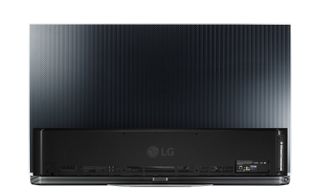
In the Movie mode, the audio was boosted on the top and bottom ends, making for a splashier sound best suited to action flicks. The audio's most significant weakness was that the sound system tended to have a narrow sound stage, but it did well playing a variety of music.
Interface: Unique smarts
While other manufacturers have opted for Android (Sony and Vizio) or Roku (TCL and Hisense), LG continues to upgrade its own smart webOS software, which is now on version 3.0. It includes support for the major streaming services — such as Netflix, Amazon and Vudu — but it doesn't have the broad support that the others enjoy. There's no HBO, Showtime or PBS apps, for example, and the pickings in the app store are slim. If you're planning to become a cord cutter, add a 4K Roku box to your setup.

webOS does include a couple of unique features. For example, there's a digital zoom option that allows you to zoom in on a specific area of the screen, so you can replay controversial calls (fumble!) or news footage. LG also has its own feature for sharing smartphone apps on the big screen. It operates like Google's Chromecast, so it's limited to specific applications.
Updated for the LG E6 is a new remote that adheres to the more-is-more ergonomic philosophy. Looking like a B&O design, it's a slick, silver-and-black curved-wand-style controller that has a nice weight in your hand.
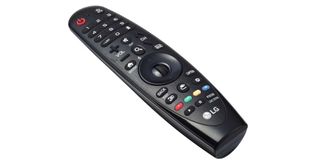
Unlike minimalist models, the LG clicker has a full complement of numeric keys, as well as up and down volume and channel buttons. In addition, it features a mic switch for voice searches (adequate but not exceptional) and a center thumb wheel for maneuvering the cursor on-screen. You can direct the cursor by waving the remote — it works like a wireless mouse — and when you find a selection, you simply press the clickable wheel.
Bottom line
Top LCD models, such as the $4,000 Samsung KS9000, are closing in on LG's industry-leading OLEDs — but they are not quite there yet. And LG is setting a very high bar by supporting all of the HDR formats it can, beating others such as Samsung and Sony in this regard. Consequently, if you want the best TV and money is no object, LG's OLEDs should be at the top of your list. The LG B6 is nearly as good and costs about $1,000 less, but if you want a better remote and audio — along with an amazing picture — the LG E6 is the set to get.
Sign up to get the BEST of Tom’s Guide direct to your inbox.
Upgrade your life with a daily dose of the biggest tech news, lifestyle hacks and our curated analysis. Be the first to know about cutting-edge gadgets and the hottest deals.
John R. Quain has been reviewing and testing video and audio equipment for more than 20 years. For Tom's Guide, he has reviewed televisions, HDTV antennas, electric bikes, electric cars, as well as other outdoor equipment. He is currently a contributor to The New York Times and the CBS News television program.

